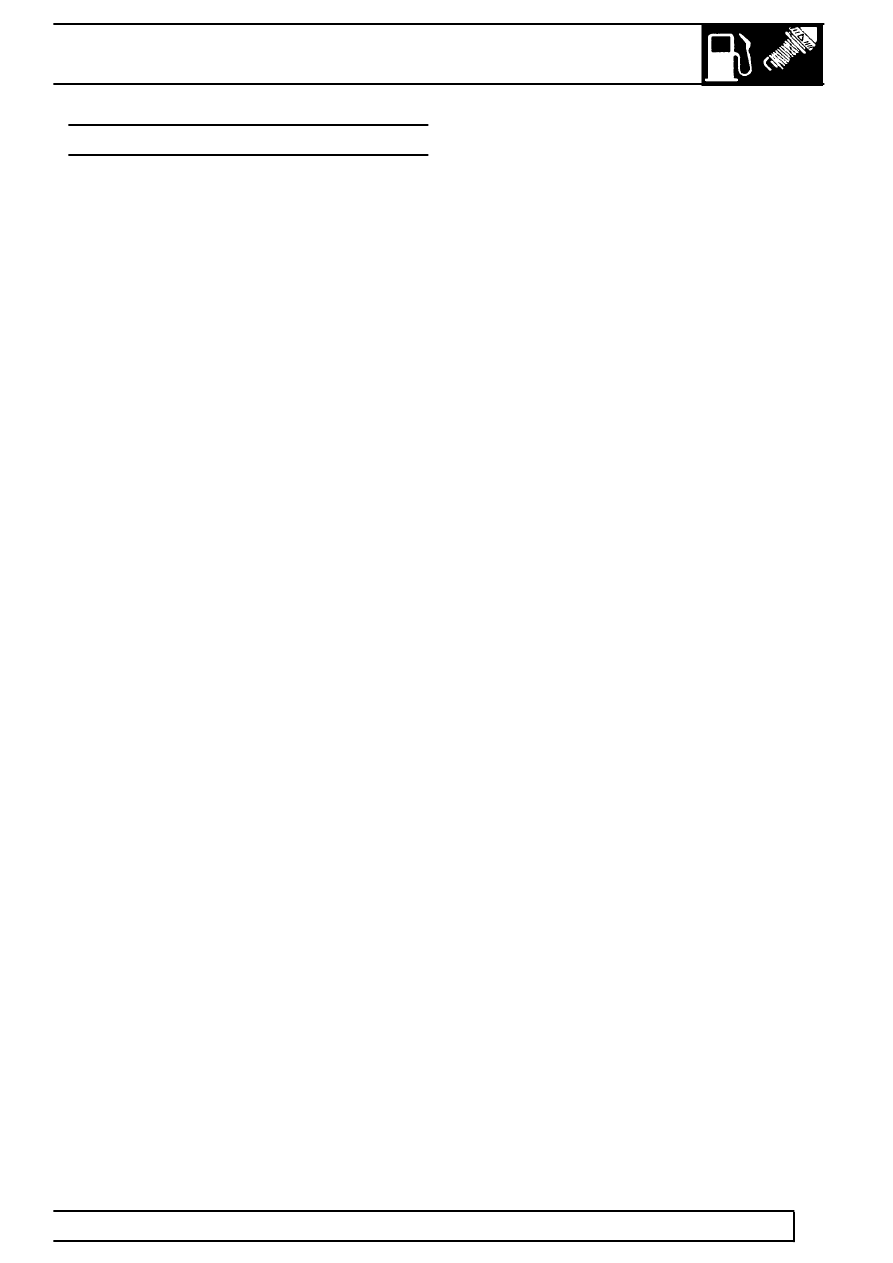300Tdi Defender

FUEL SYSTEM
9
DESCRIPTION AND OPERATION
OPERATION
Diesel engines operate by compression ignition. The
rapid compression of air in the cylinder during the
compression cycle heats the air and when fuel is
injected into the heated air, it ignites instantaneously.
During cold tarting, automatically controlled heater
plugs assist in raising the temperature of the
compressed air to ignition point.
A cold start advance unit advances the injection timing
to further assist starting. Idle quality is improved by
the high idle setting.
The engine is supplied with pre-compressed air by a
single stage turbocharger.
Exhaust gases passing over a turbine cause it to
rotate, driving a compressor mounted on the turbine
shaft. Air drawn from the cold air intake passes, via
the air cleaner, to the turbocharger where it is
compressed. Compression in the turbocharger warms
up the air considerably, so that it expands. As a result
the air mass per cylinder is reduced, having a
negative effect on power output. By fitting a charge-air
intercooler, located on the LH side of the radiator, the
air is cooled before reaching the cylinders. This
increases power output through increased mass of
oxygen in the combustion process, as well as
maximising engine durability, through maintaining
lower piston and head temperatures.
Fuel is drawn from the tank by a mechanical lift pump
and passes to the injection pump via a filter. In
addition to removing particle contamination from the
fuel, the filter incorporates a water separator, which
removes and stores water.
The sedimentor/s, when fitted, is located adjacent to
the fuel tank/s and separates contamination and water
particles in the fuel before reaching the fuel lift pump.
The injection pump meters a precisely timed, exact
quantity of fuel to the injectors in response to throttle
variations, injection timing varying with engine speed.
Any excess fuel delivered to the injection pump is
passed back to the tank via the spill return line.
Fuel is injected in a finely atomised form into the main
combustion chamber, the burning fuel expands
rapidly, creating extreme turbulence which mixes the
burning fuel thoroughly with the compressed air,
providing complete combustion.
Cold Starting is assisted by heater plugs, a cold start
advance unit and a high idle setting.
Heater plugs
Heater plug operation is controlled by a timer unit,
start relay and resistor. When the ignition is turned on
the timer unit is energised, the heater plugs start to
operate and a warning light on the dashboard
illuminates, remaining on until the heater plugs are
automatically switched off.
The length of time the heater plugs will operate is
dependent on under bonnet temperature, which is
monitored by a sensor located in the timer unit.
Starting the engine results in the power supply to the
heater plugs passing through the resistor, which
reduces their operating temperature. The heater plugs
are cut out either by the temperature sensor in the
timer, or by a microswitch on the injection pump which
operates when the throttle is depressed.
Cold start advance
The cold start advance unit is connected to the engine
cooling system via hoses. It contains a temperature
sensitive element which is retracted when cold and
pulls the advance lever, via cable, towards the rear of
the pump against spring pressure. As coolant
temperature rises, the cold start element expands
releasing tension on the cable and allowing spring
pressure to move the advance lever forwards.
Exhaust gas recirculation (EGR), when fitted
Operation of the EGR system is dependent on the
following:
Engine temperature - must be between 20
°
C and
100
°
C approx.
Engine speed - must be between 630 and 2850
rev/min.
Engine load - calculated by throttle position
sensor.
EGR valve lift position.
Duration of engine idling.
